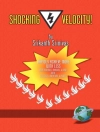Job and Work Analysis: Methods, Research, and Applications for Human Resource Management provides students and professionals alike with an in-depth exploration of job analysis. Job analysis encompasses a wide range of crucial topics that help us understand what people do at work and why. This one-of-a-kind text expertly unpacks the best job analysis methods and then illustrates how to apply these methods to solve some of the most common workplace problems. Readers will learn the best practices for helping people work smarter, improving hiring and training, making jobs safer, and providing a satisfying work environment.
The new
Third Edition includes new references, the latest research findings, and expanded discussions of competency models, teams, and O*NET.
Mục lục
Preface
About the Authors
Chapter 1 • Introduction
Overview of the Book
The Uses of Job Analysis
Definitions
Building Blocks of Job Analysis Methods
A Couple of Job Analysis Projects
Chapter Summary
Chapter 2 • Work-Oriented Methods
Time-and-Motion Study
Functional Job Analysis
Task Inventories
Critical Incident Technique
Chapter Summary
Chapter 3 • Worker-Oriented Methods
Job Element Method
Position Analysis Questionnaire
Other Trait-Based Worker-Oriented Measures
Cognitive Task Analysis
Personality-Oriented Job Analysis
Chapter Summary
Chapter 4 • Hybrid Methods
Combination Job Analysis Method
Multimethod Job Design Questionnaire
Work Design Questionnaire
Occupational Information Network (O*NET)
Chapter Summary
Chapter 5 • Management and Teams
Management and Leadership
Competency Modeling
Job Analysis for Teams
Cognitive Task Analysis for Teams
Chapter Summary
Chapter 6 • Job Analysis and the Law
Federal Legislation
Enforcement of Equal Employment Opportunity Laws
Executive Orders
Professional Standards
Prescriptions for Job Analysis
Chapter Summary
Chapter 7 • Job Description, Performance Management and Appraisal, Job Evaluation, and Job Design
Job Description
Performance Management and Appraisal
Job Evaluation
Job Design/Redesign
Chapter Summary
Chapter 8 • Staffing and Training
Staffing
Training
Chapter Summary
Chapter 9 • Doing a Job Analysis Study
Matching Purpose and Job Analysis Attributes
Selecting Approaches
Observations and Interviews
Questionnaires
Analyzing Data
A Note About Accuracy in Job Analysis
Chapter Summary
Chapter 10 • The Future of Job Analysis
Changing Conditions
Implications for Jobs and Work/Job Analysis
Chapter Summary
Glossary
References
Index
Giới thiệu về tác giả
Edward L. Levine earned his Ph D in industrial and organizational psychology from New York University in 1970. He is currently Professor in the Psychology Department at the University of South Florida and served as chair of the department from 1993 to 2001. His research interests include job analysis, personnel selection, control in organizations, and affect at work. He is certified as a diplomate in Industrial and Organizational Psychology by the American Board of Professional Psychology, and he is a Fellow of the Society for Industrial and Organizational Psychology and the American Psychological Association.












